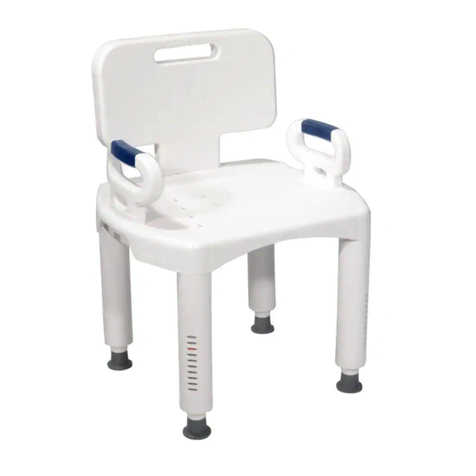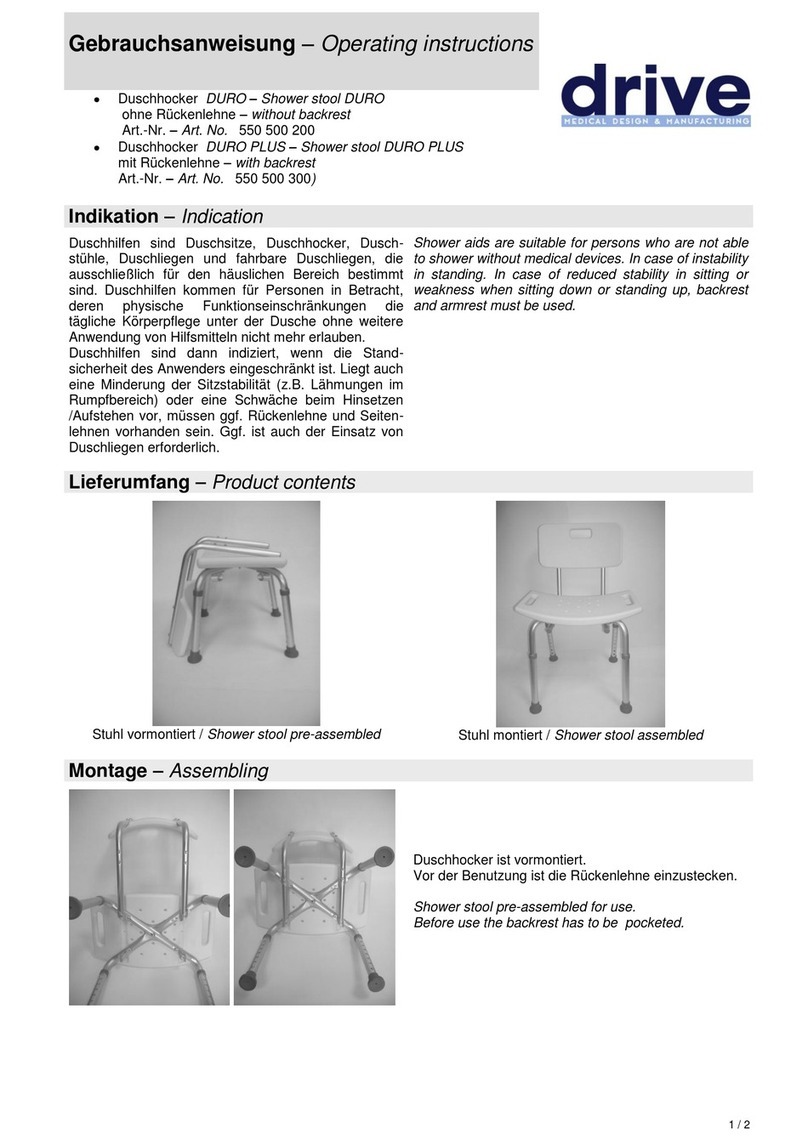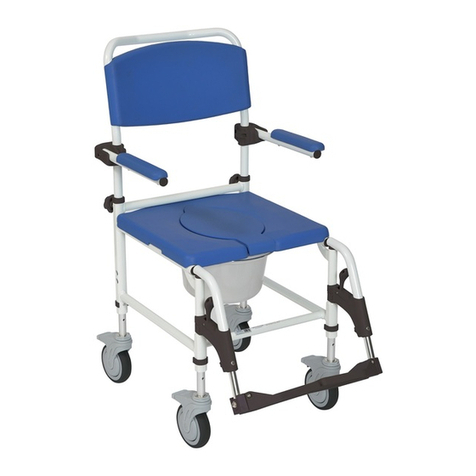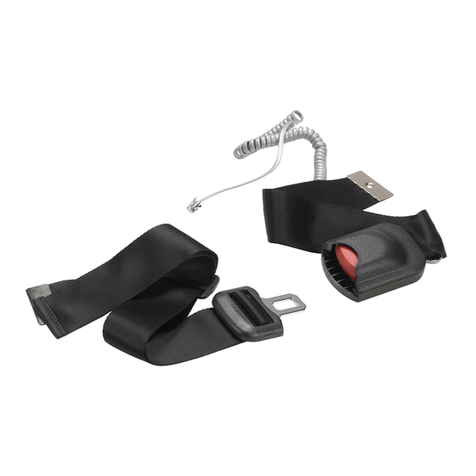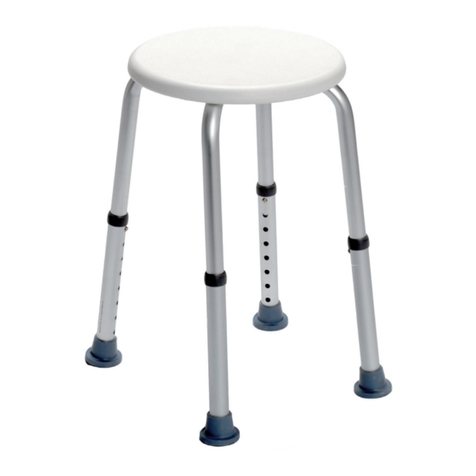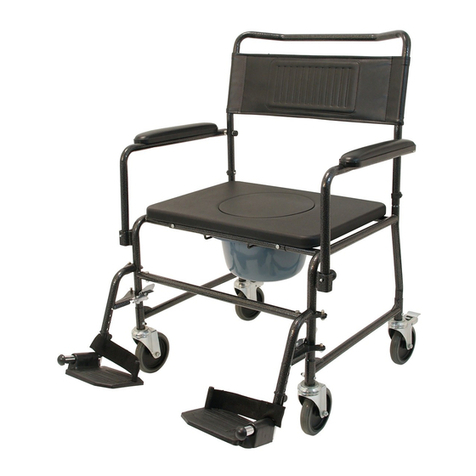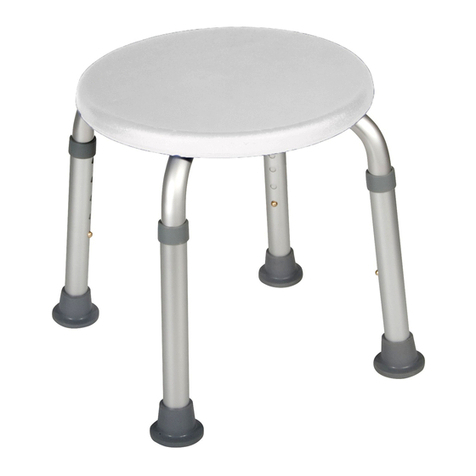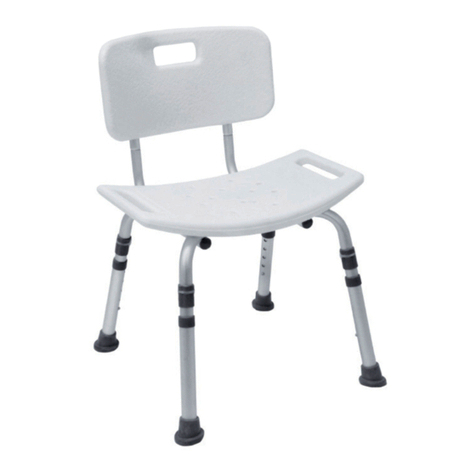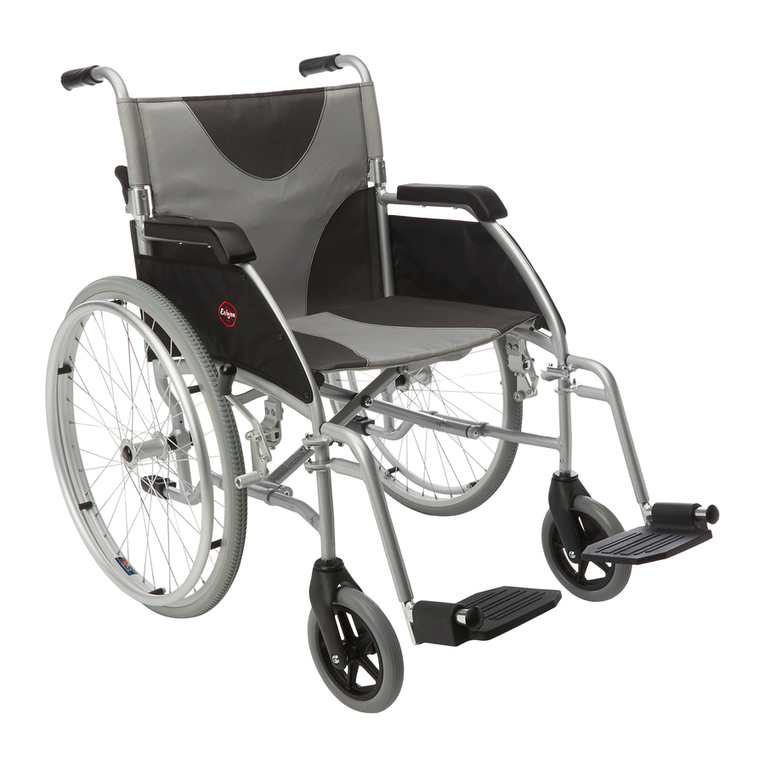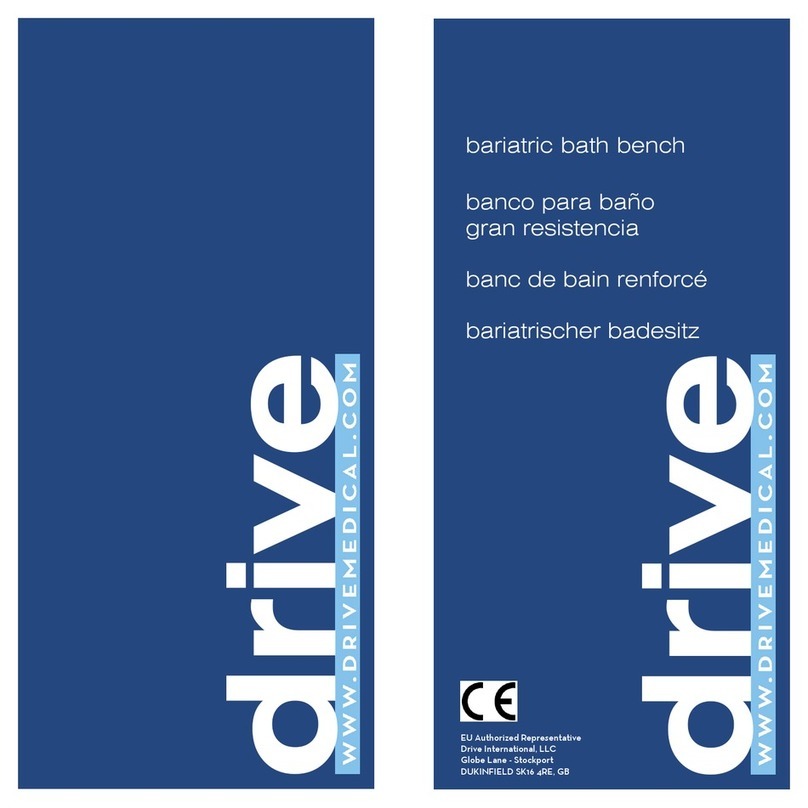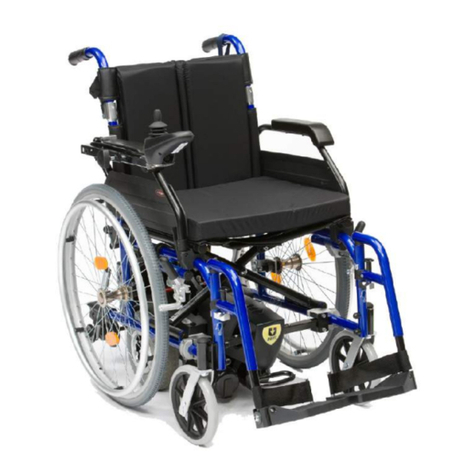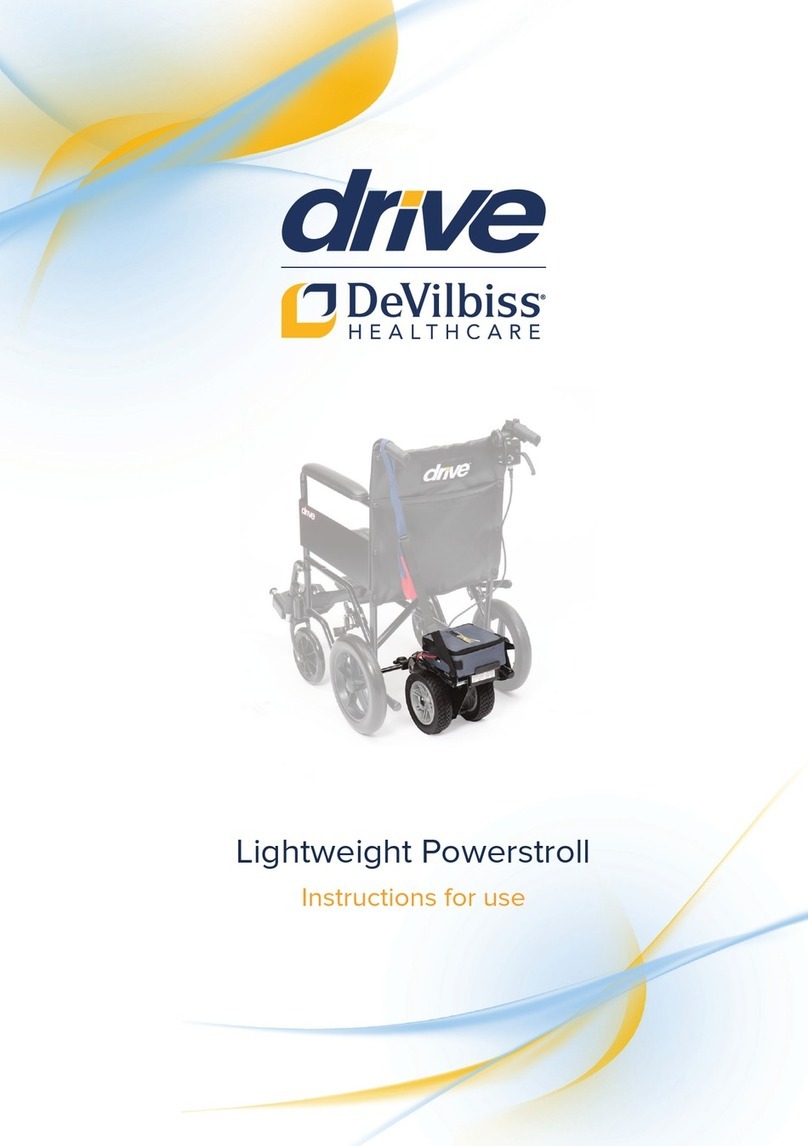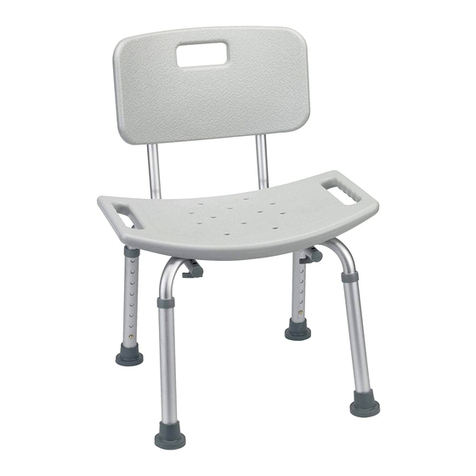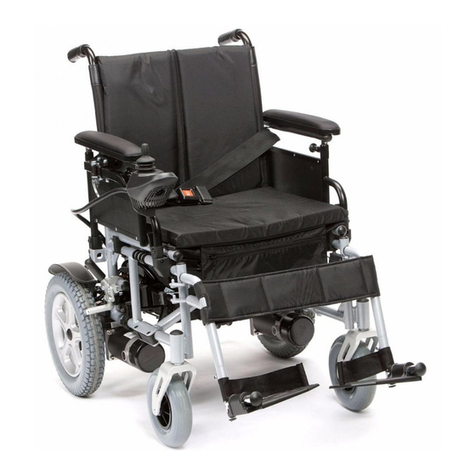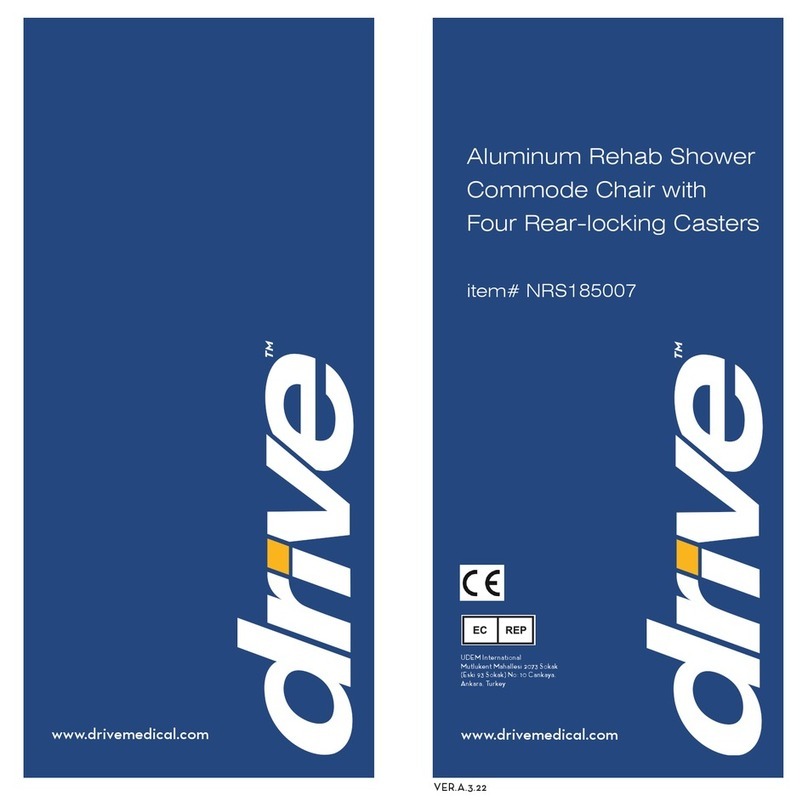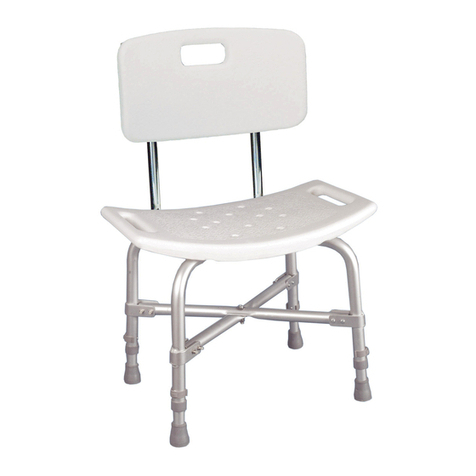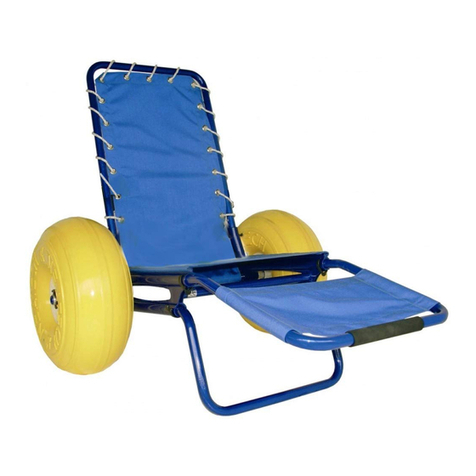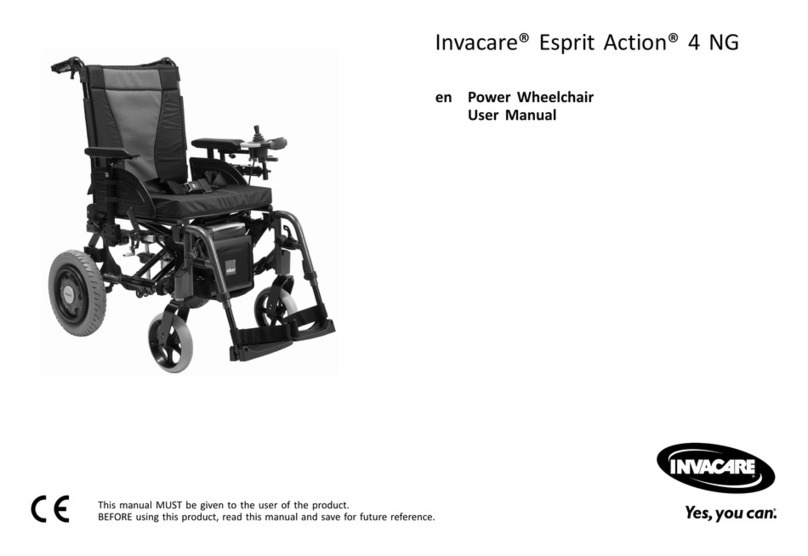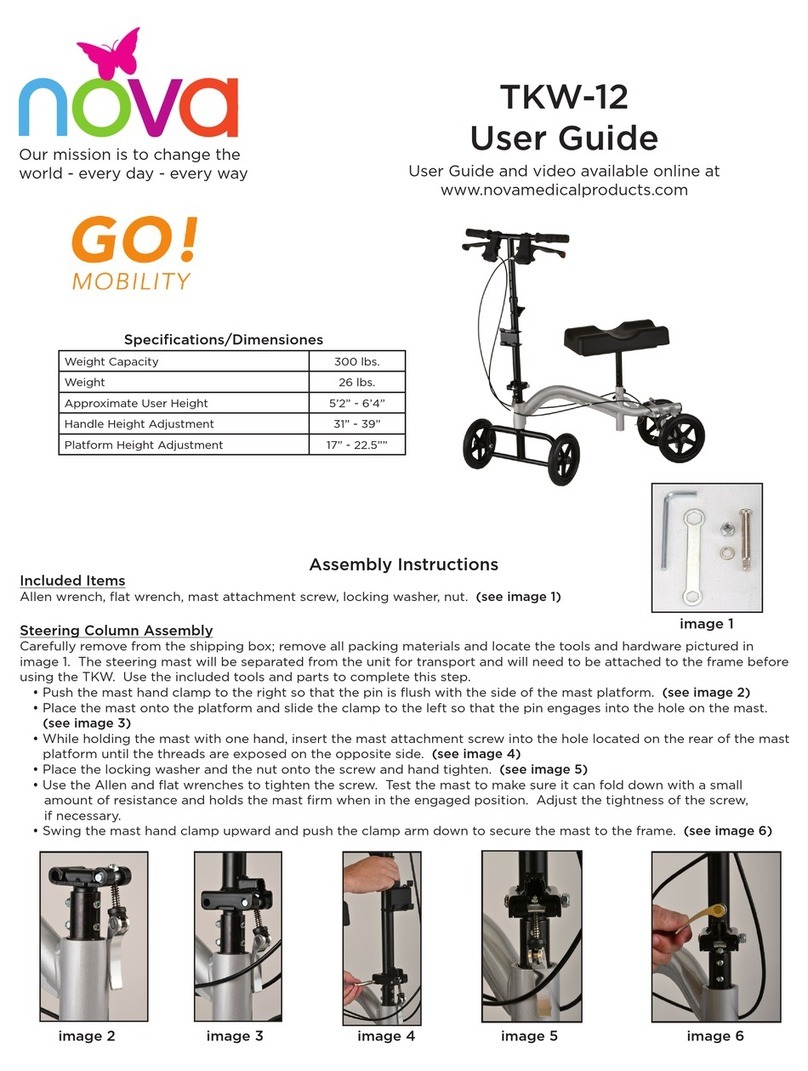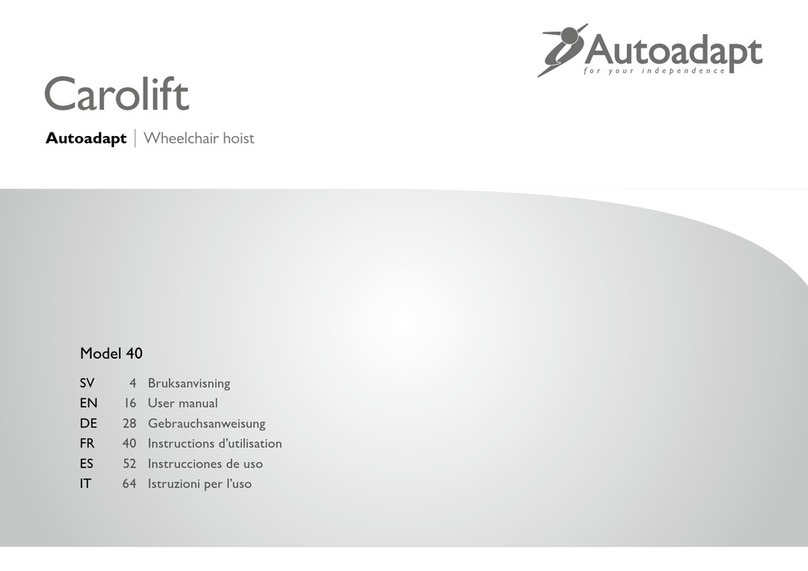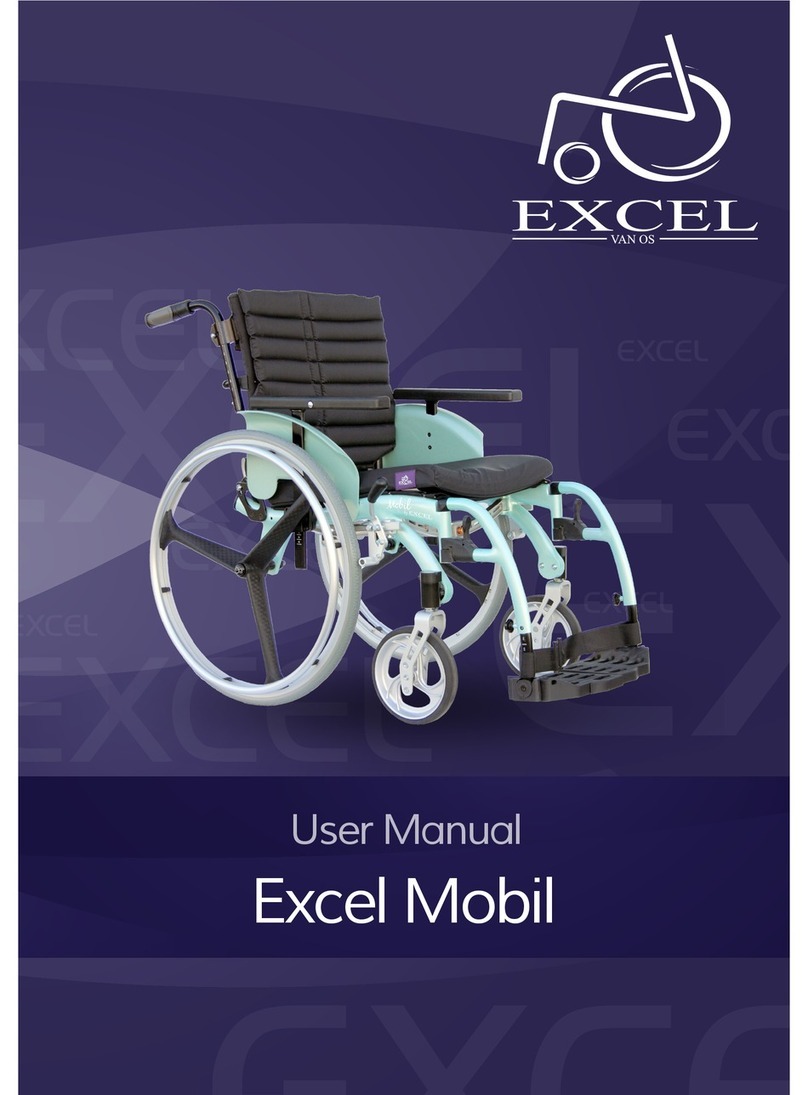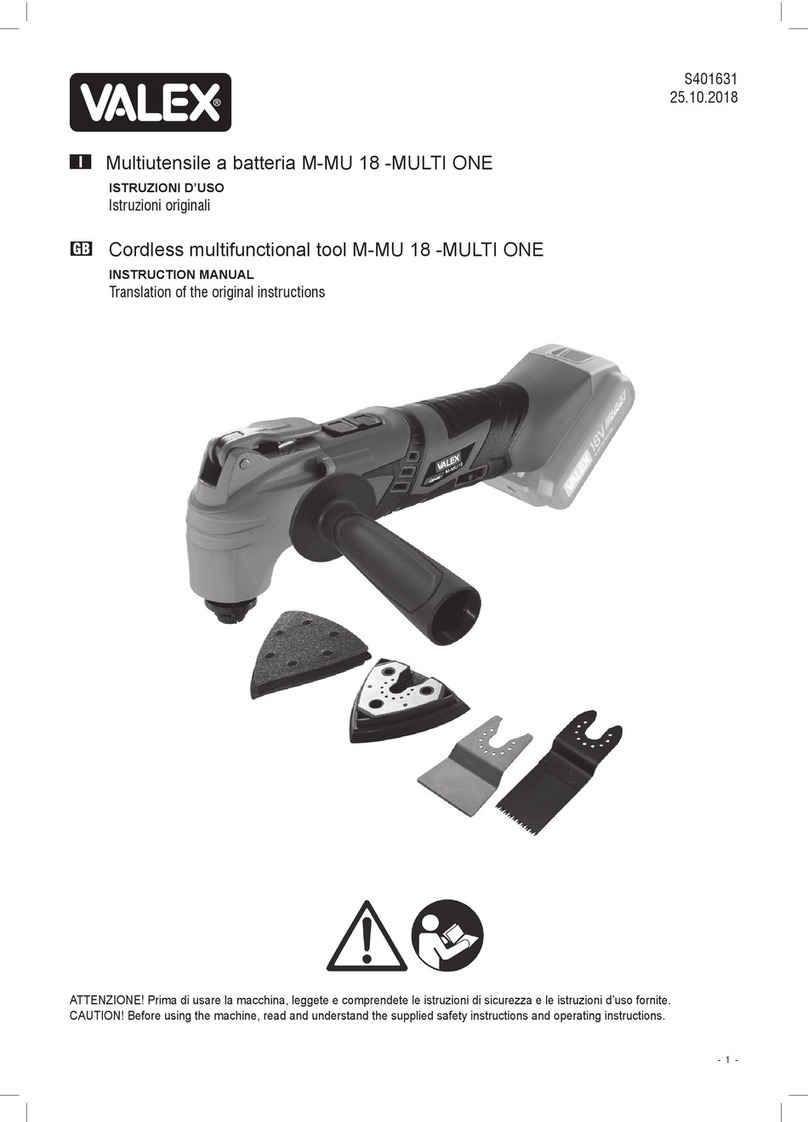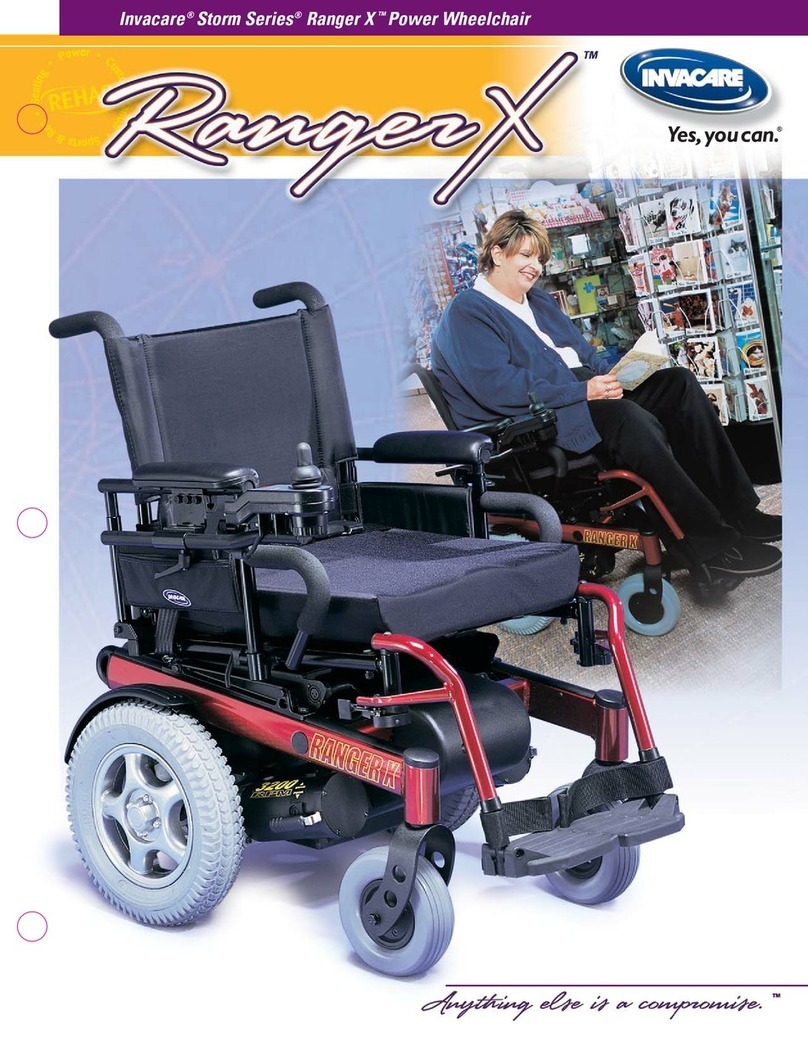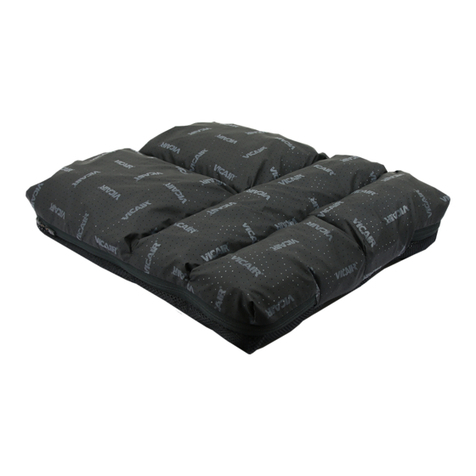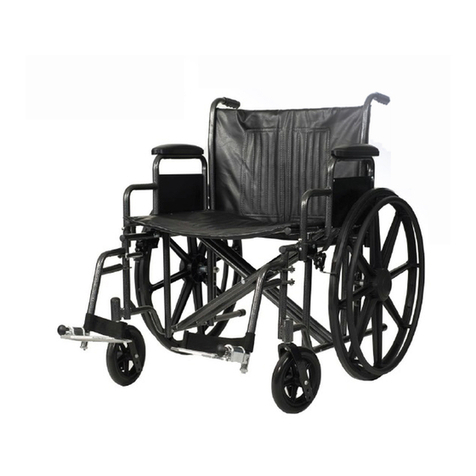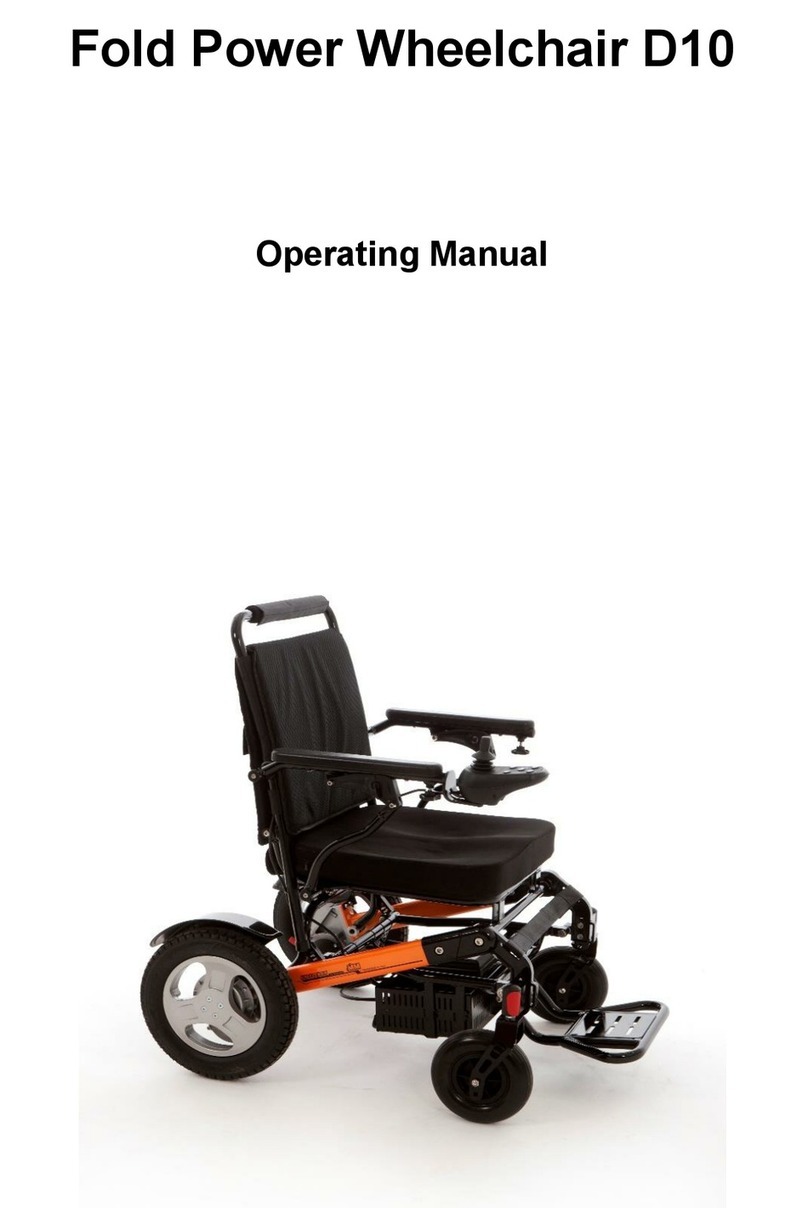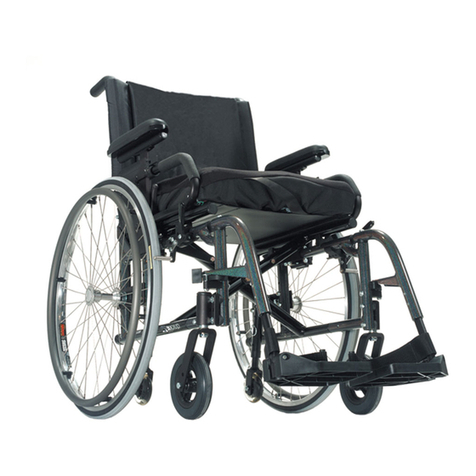States Food and drugAdministration (FDA) suggests that the following statement be
incorporated to the user’s manual for all power wheelchairs. Power wheelchairs and
motorized scooters (in this section, both will be referred to as powered wheelchairs)
may as susceptible to electromagnetic interference (EMI), which is interfering
electromagnetic energy emitted from sources such as radio stations, TV stations
amateur radio (HAN) transmitter, two-way radios and cellular phones. The interfer
(from radio wave sources) can cause the powered wheelchair to release its b
move by itself or move in unintended directions. It can also permanently damage the
powered wheelchair’s control system. The intensity of the EM energy can be measure
in volts per meter (V/m) each powered wheelchair can resist EMI up to a certain
intensity. This is called “immunity level”. The higher the immunity level, the greater
the protection. At this time, current technology is capable of providing at least 20 V/m
of immunity level, which would provide useful
protection against common sources of radiated EMI.
,
ence
rakes,
d
e chance of unintended brake
and(CB)
2. ng
3. t or brake release occurs, turn the powered wheelchair off as
4. accessories or components, or modifying the powered wheel-
red
5
. Report all incidents of unintended movement or brake release to the powered y.
URN OFF YOUR POWERED WHEELCHAIR AS SOON AS POSSIBLE WHEN
llable direction.
The FD ers of power wheelchairs asking them to test
0
Following the warnings listed below should reduce th
release or powered wheelchair movement that could result in serious injury:
1. Do not turn on hand-held personal communication devices such as citizens b
radios and cellular phones while the powered wheelchair is turned on.
Be aware of nearby transmitters such as radio or TV stations and try to avoid comi
close to them.
If unintended movemen
soon as it is safe.
Be aware that adding
chair, may make it more susceptible to interference from radio wave sources
(Note: It is difficult to evaluate the effect on the overall immunity of the powe
wheelchair).
wheelchair manufacturer, and note whether there is a radio wave source nearb
T
EXPERIENCING THE FOLLOWING:
‧ Unintentional motions
‧ Unintended or uncontro
‧ Unexpected brake release
A has written to the manufactur
new products to be sure they provide a reasonable degree of immunity against EMI.
The FDArequires that a powered wheelchair should have an immunity level at least 2
V/m, which provides a reasonable degree of protection against more common sources

